388 low relevance results shown for 'End'. Prev |1|2|3|4|5|6|7|8|9|10|11|12|13|14|15|16 | Next | View 100 per page
Showing low relevance matches only. Return to normal search results
Forces and Moving - The way objects move depends on a variety of factors including their size and shape ACSSU073 Year 4 Biological Sciences
Animal Survival - Living things, including plants and animals, depend on each other and the environment to survive ACSSU175 Year 9 Biological Sciences
Organ Systems - Multi-cellular organisms rely on coordinated and interdependent internal systems to respond to changes to their environment ACSSU176 Year 9 Biological Sciences
Ecology - Ecosystems consist of communities of interdependent organisms and abiotic components of the environment; matter and energy flow through these systems ACSBL046 Year 11 Cells and multicellular organism
Cells as the basis of life - Movement of materials across membranes occurs via diffusion, osmosis, active transport and/or endocytosis ACSCH016 Year 11 Chemical fundamentals
Properties and structure of atoms - Trends in the observable properties of elements are evident in periods and groups in the periodic table ACSCH025 Year 11 Chemical fundamentals
Properties and structure of materials - Materials are either pure substances with distinct measurable properties (for example, melting and boiling point, reactivity, strength, density) or mixtures with properties dependent on the identity and relative amounts of the substances that make up the ACSCH030 Year 11 Chemical fundamentals
Properties and structure of materials - Ions are atoms or groups of atoms that are electrically charged due to an imbalance in the number of electrons and protons; ions are represented by formulae which include the number of constituent atoms and the charge of the ion (for example, O2–, SO42–) ACSCH032 Year 11 Chemical fundamentals
Properties and structure of materials - The characteristic properties of metals (for example, malleability, thermal conductivity, electrical conductivity) are explained by modelling metallic bonding as a regular arrangement of positive ions (cations) made stable by electrostatic forces of attra ACSCH037 Year 11 Chemical fundamentals
Chemical reactions - Endothermic and exothermic reactions can be explained in terms of the Law of Conservation of Energy and the breaking and reforming of bonds; heat energy released or absorbed can be represented in thermochemical equations ACSCH066 Year 11 Molecular interactions and reactions
Aqueous solutions and acidity - The pH scale is used to compare the levels of acidity or alkalinity of aqueous solutions; the pH is dependent on the concentration of hydrogen ions in the solution ACSCH097 Year 12 Equilibrium acids and redox reactions
Chemical equilibrium systems - Acids are substances that can act as proton (hydrogen ion) donors and can be classified as monoprotic or polyprotic depending on the number of protons donated by each molecule of the acid ACSCH102 Year 12 Equilibrium acids and redox reactions
Chemical equilibrium systems - Volumetric analysis methods involving acidbase reactions rely on the identification of an equivalence point by measuring the associated change in pH, using chemical indicators or pH meters, to reveal an observable end point ACSPH099 Year 12 Gravity and electromagnetism
Gravity and motion - Projectile motion can be analysed quantitatively by treating the horizontal and vertical components of the motion independently ACSPH100 Year 12 Gravity and electromagnetism
Gravity and motion - When an object experiences a net force of constant magnitude perpendicular to its velocity, it will undergo uniform circular motion, including circular motion on a horizontal plane and around a banked track ACSPH098 Year 12 Gravity and electromagnetism
Gravity and motion - The vector nature of the gravitational force can be used to analyse motion on inclined planes by considering the components of the gravitational force (that is, weight) parallel and perpendicular to the plane
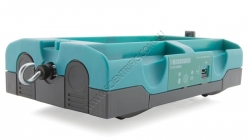
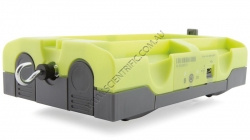

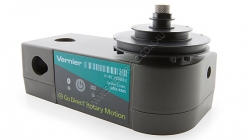

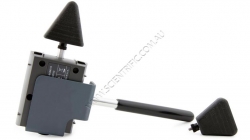
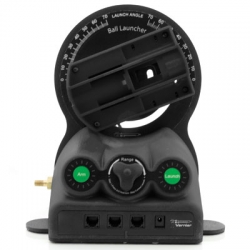
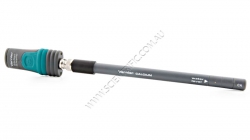

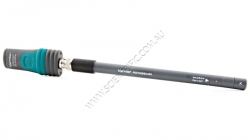
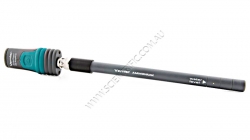
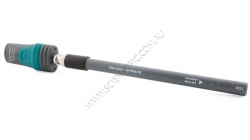
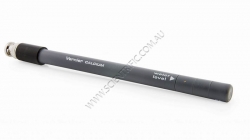
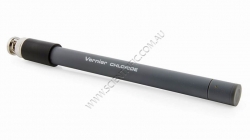
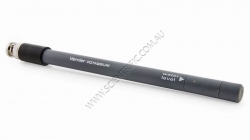
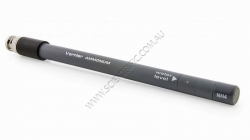
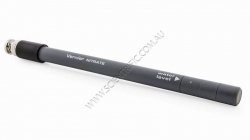

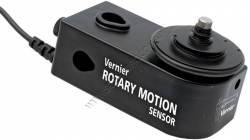

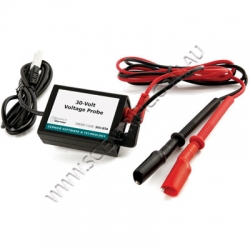
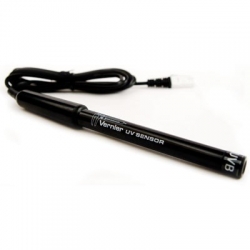

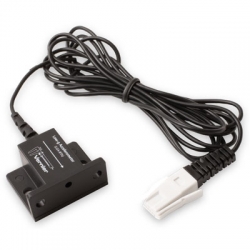
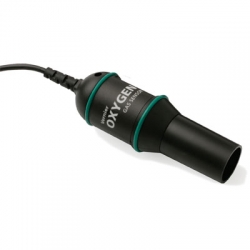
388 low relevance results shown for 'End'. Prev |1|2|3|4|5|6|7|8|9|10|11|12|13|14|15|16 | Next | View 100 per page
Showing low relevance matches only. Return to normal search results
Curriculum resources related to 'End'
ACSSU005 Foundation Physical SciencesForces and Moving - The way objects move depends on a variety of factors including their size and shape ACSSU073 Year 4 Biological Sciences
Animal Survival - Living things, including plants and animals, depend on each other and the environment to survive ACSSU175 Year 9 Biological Sciences
Organ Systems - Multi-cellular organisms rely on coordinated and interdependent internal systems to respond to changes to their environment ACSSU176 Year 9 Biological Sciences
Ecology - Ecosystems consist of communities of interdependent organisms and abiotic components of the environment; matter and energy flow through these systems ACSBL046 Year 11 Cells and multicellular organism
Cells as the basis of life - Movement of materials across membranes occurs via diffusion, osmosis, active transport and/or endocytosis ACSCH016 Year 11 Chemical fundamentals
Properties and structure of atoms - Trends in the observable properties of elements are evident in periods and groups in the periodic table ACSCH025 Year 11 Chemical fundamentals
Properties and structure of materials - Materials are either pure substances with distinct measurable properties (for example, melting and boiling point, reactivity, strength, density) or mixtures with properties dependent on the identity and relative amounts of the substances that make up the ACSCH030 Year 11 Chemical fundamentals
Properties and structure of materials - Ions are atoms or groups of atoms that are electrically charged due to an imbalance in the number of electrons and protons; ions are represented by formulae which include the number of constituent atoms and the charge of the ion (for example, O2–, SO42–) ACSCH032 Year 11 Chemical fundamentals
Properties and structure of materials - The characteristic properties of metals (for example, malleability, thermal conductivity, electrical conductivity) are explained by modelling metallic bonding as a regular arrangement of positive ions (cations) made stable by electrostatic forces of attra ACSCH037 Year 11 Chemical fundamentals
Chemical reactions - Endothermic and exothermic reactions can be explained in terms of the Law of Conservation of Energy and the breaking and reforming of bonds; heat energy released or absorbed can be represented in thermochemical equations ACSCH066 Year 11 Molecular interactions and reactions
Aqueous solutions and acidity - The pH scale is used to compare the levels of acidity or alkalinity of aqueous solutions; the pH is dependent on the concentration of hydrogen ions in the solution ACSCH097 Year 12 Equilibrium acids and redox reactions
Chemical equilibrium systems - Acids are substances that can act as proton (hydrogen ion) donors and can be classified as monoprotic or polyprotic depending on the number of protons donated by each molecule of the acid ACSCH102 Year 12 Equilibrium acids and redox reactions
Chemical equilibrium systems - Volumetric analysis methods involving acidbase reactions rely on the identification of an equivalence point by measuring the associated change in pH, using chemical indicators or pH meters, to reveal an observable end point ACSPH099 Year 12 Gravity and electromagnetism
Gravity and motion - Projectile motion can be analysed quantitatively by treating the horizontal and vertical components of the motion independently ACSPH100 Year 12 Gravity and electromagnetism
Gravity and motion - When an object experiences a net force of constant magnitude perpendicular to its velocity, it will undergo uniform circular motion, including circular motion on a horizontal plane and around a banked track ACSPH098 Year 12 Gravity and electromagnetism
Gravity and motion - The vector nature of the gravitational force can be used to analyse motion on inclined planes by considering the components of the gravitational force (that is, weight) parallel and perpendicular to the plane
Products related to 'End'

Vernier Go Direct Sensor Cart Green
VERNIER GO DIRECT SENSOR CART GREEN
The Vernier Go Direct Sensor Cart features built-in, wireless sensors for one-dimensional dynamics and kinematics experiments. It directly connects wirelessly via Bluetooth® wireless technology to your platform.
With Vernier's Go Dir...
Order code: GDX-CART-G

Vernier Go Direct Sensor Cart Yellow
VERNIER GO DIRECT SENSOR CART YELLOW
The Vernier Go Direct Sensor Cart features built-in, wireless sensors for one-dimensional dynamics and kinematics experiments. It directly connects wirelessly via Bluetooth® wireless technology to your platform.
With Vernier's Go Di...
Order code: GDX-CART-Y

Vernier Go Direct Gas Pressure Sensor
VERNIER GO DIRECT GAS PRESSURE SENSOR
Vernier's Go Direct Gas Pressure Sensor measures the absolute pressure of a gas. It directly connects wirelessly via Bluetooth® or wired via USB to your platform.
Use the Vernier Go Direct Gas Pressure Sensor to monitor gas pressur...
Order code: GDX-GP

Vernier Go Direct Rotary Motion Sensor With Kit
VERNIER GO DIRECT ROTARY MOTION SENSOR WITH ACCESSORIES KIT
Purchase Vernier's GDX-RMS Go Direct Rotary Motion Sensor and AK-RMV Rotational Motion Accessory Kit together in this package.
Monitor angular motion easily and precisely with Vernier's Go Direct Rotary Motion...
Order code: GDX-RMPK

Vernier Go Direct Rotary Motion Sensor
VERNIER GO DIRECT ROTARY MOTION SENSOR
Monitor angular motion easily and precisely with Vernier's Go Direct Rotary Motion Sensor which connects wirelessly via Bluetooth® or wired via USB to your device. The wireless connection eliminates the cables that can get caught and...
Order code: GDX-RMS

Vernier Reflex Hammer Accessory Kit
VERNIER REFLEX HAMMER ACCESSORY KIT
Vernier's Reflex Hammer Accessory Kit converts your Vernier force sensor into a reflex hammer. Use it to capture the strike of the hammer on a tendon. When using the kit with an EKG sensor to record EMGs, students can study reflexes. By...
Order code: RFX-ACC

Vernier Projectile Launcher
VERNIER PROJECTILE LAUNCHER
Use the Vernier Projectile Launcher to investigate important concepts in two-dimensional kinematics. Launch steel balls at angles between 0 and 70 degrees and over distances up to 2.5m
The solid heavy base provides an easy-to-use and reliabl...
Order code: VPL

Vernier Go Direct Calcium Ion-Selective Electrode
VERNIER GO DIRECT CALCIUM ION-SELECTIVE ELECTRODE
Vernier's Go Direct Calcium Ion-Selective Electrode (ISE) can be used to measure the concentration of calcium (Ca2+) in aqueous samples. It connects via Bluetooth® wireless technology or wired via USB to your device.
Da...
Order code: GDX-CA

Vernier Go Direct Chloride Ion-Selective Electrode
VERNIER GO DIRECT CHLORIDE ION-SELECTIVE ELECTRODE
Vernier's Go Direct Chloride Ion-Selective Electrode (ISE) is used to measure the concentration of chloride (Cl-) in aqueous samples. It connects via Bluetooth® wireless technology or wired via USB to your device.
The ...
Order code: GDX-CL

Vernier Go Direct Potassium Ion-Selective Electrode
VERNIER GO DIRECT POTASSIUM ION-SELECTIVE ELECTRODE
Vernier's Go Direct Potassium Ion-Selective Electrode (ISE) can be used to measure the concentration of potassium (K+) ions in aqueous solutions. It connects via Bluetooth® wireless technology or wired via USB to your de...
Order code: GDX-K

Vernier Go Direct Ammonium Ion-Selective Electrode
VERNIER GO DIRECT AMMONIUM ION-SELECTIVE ELECTRODE
Vernier's Go Direct Ammonium Ion-Selective Electrode (ISE) can be used to measure the concentration of ammonium (NH4+) in aqueous samples. It connects via Bluetooth® wireless technology or wired via USB to your device.
...
Order code: GDX-NH4

Vernier Go Direct Nitrate Ion-Selective Electrode
VERNIER GO DIRECT NITRATE ION-SELECTIVE ELECTRODE
The Vernier Go Direct Nitrate Ion-Selective Electrode (ISE) can be used to measure the concentration of nitrate (NO3-) in aqueous samples. It connects via Bluetooth® wireless technology or wired via USB to your device.
...
Order code: GDX-NO3

Vernier Go Direct Calcium Ion-Selective Electrode BNC
VERNIER GO DIRECT CALCIUM ION-SELECTIVE ELECTRODE BNC
This is a replacement electrode for GDX-CA Vernier Go Direct™ Calcium Ion-Selective Electrode
Connect the Vernier Go Direct™ Calcium Ion-Selective Electrode BNC ...
Order code: GDX-CA-BNC

Vernier Go Direct Chloride Ion-Selective Electrode BNC
VERNIER GO DIRECT CHLORIDE ION-SELECTIVE ELECTRODE BNC
This is a replacement electrode for GDX-CL Vernier Go Direct™ Chloride Ion-Selective Electrode
Connect the Vernier Go Direct™ Chloride Ion-Selective Electrode B...
Order code: GDX-CL-BNC

Vernier Go Direct Potassium Ion-Selective Electrode BNC
VERNIER GO DIRECT POTASSIUM ION-SELECTIVE ELECTRODE BNC
This is a replacement electrode for GDX-K Vernier Go Direct™ Potassium Ion-Selective Electrode
Connect the Vernier Go Direct Potassium Ion-Selective Electrode ...
Order code: GDX-K-BNC

Vernier Go Direct Ammonium Ion-Selective Electrode BNC
VERNIER GO DIRECT AMMONIUM ION-SELECTIVE ELECTRODE BNC
This is a replacement electrode for GDX-NH4 Vernier Go Direct™ Ammonium Ion-Selective Electrode
Connect the Vernier Go Direct™ Ammonium Ion-Selective Electrode ...
Order code: GDX-NH4-BNC

Vernier Go Direct Nitrate Ion-Selective Electrode BNC
VERNIER GO DIRECT NITRATE ION-SELECTIVE ELECTRODE BNC
This is a replacement electrode for GDX-NO3 Vernier Go Direct™ Nitrate Ion-Selective Electrode
Connect the Vernier Go Direct™ Nitrate Ion-Selective Electrode BNC...
Order code: GDX-NO3-BNC

Vernier Go Direct pH BNC Electrode
VERNIER GO DIRECT pH BNC ELECTRODE
This is a replacement electrode for the GDX-PH Vernier Go Direct pH Sensor
Vernier's Go Direct pH Electrode BNC is a general-purpose pH electrode that connects via BNC to a Vernier ...
Order code: GDX-PH-BNC

Vernier Rotary Motion Sensor with Accessory Kit
VERNIER ROTARY MOTION SENSOR WITH ACCESSORY KIT
Purchase Vernier's RMV-BTD Rotary Motion Sensor and AK-RMV Rotational Motion Accessory Kit together in this package.
The RMV-BTD Vernier Rotary Motion Sensor is a bidirectional angle sensor designed to measure rotational ...
Order code: RMPK-BTD

Vernier Surface Temperature Probe
VERNIER SURFACE TEMPERATURE PROBE
Vernier's Surface Temperature Sensor is designed for use in situations in which low thermal mass or flexibility is required, or for a skin temperature measurement. It has an exposed thermistor that results in an extremely rapid response t...
Order code: STS-BTA

Vernier 30 Volt Voltage Probe
VERNIER 30 VOLT VOLTAGE PROBE
This sensor is suitable for measuring voltages in the range of -30 to +30 volts. Use this sensor in experiments that involve voltages larger than 10 volts, such as when working with large solar panels. Since this voltage probe covers such a ...
Order code: 30V-BTA

Vernier UVA Sensor
VERNIER UVA SENSOR
The Vernier UVA Sensor is an ultraviolet light sensor that responds primarily to UVA radiation (approximately 320 to 390nm).
It is ideal for experiments using UV lamps.
UVB-BTA Vernier UVB Sensor ...
Order code: UVA-BTA

Vernier UVB Sensor
VERNIER UVB SENSORS
The Vernier UVB Sensor is an ultraviolet light sensor that responds primarily to UVB radiation (approximately 290 to 320nm).
It is ideal for experiments using sunlight as your UV source and is the sensor recommended for the UV experiments in Vernier l...
Order code: UVB-BTA

Vernier Low-g Accelerometer
VERNIER LOW-G ACCELEROMETER
Vernier's most popular accelerometer is the best choice for most acceleration experiments including Newton’s second law, simple harmonic motion and the relationship between acceleration and force. It can also be used to study one-dimensional mo...
Order code: LGA-BTA

Vernier O2 Oxygen Gas Sensor
VERNIER O2 GAS SENSOR
Vernier's O2 Gas Sensor measures oxygen concentration in air and is temperature compensated for use in different environments. It has a wide measurement range allowing it to be used to study human and cellular respiration.
The O2 Gas Sensor can b...
Order code: O2-BTA
388 low relevance results shown for 'End'. Prev |1|2|3|4|5|6|7|8|9|10|11|12|13|14|15|16 | Next | View 100 per page



 ,
,